Defined Regions
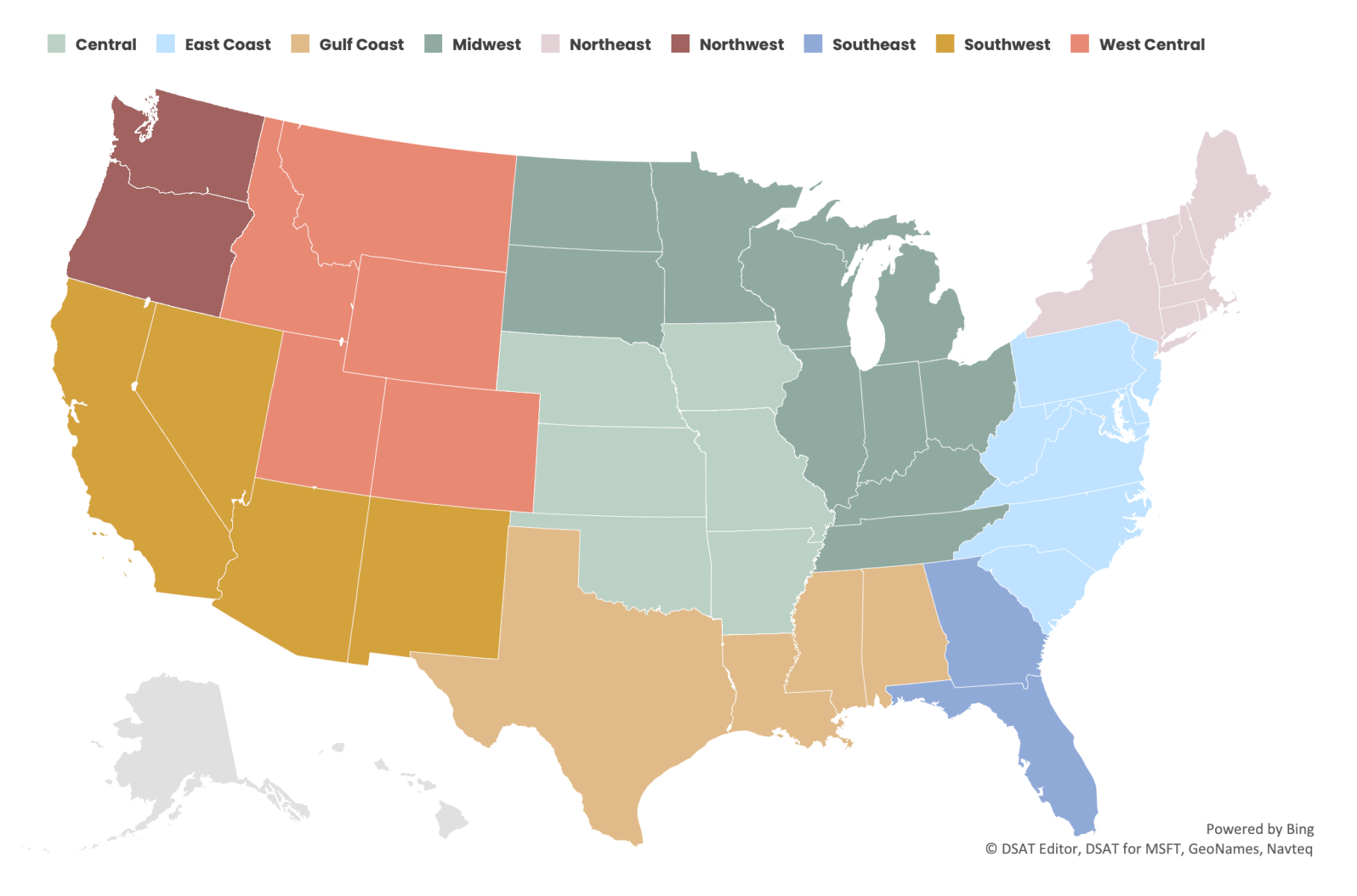
Our experts provide detailed analyses of changes and trends to provide additional insight into key drivers.
March Pricing Insights
2024 Updates From the CoreLogic Pricing Analysis and Delivery Team
The CoreLogic Pricing Analysis and Delivery Team continues to research labor costs and industry best practices for all construction categories within the Claims Construction Cost database. To standardize labor trade assignments in the CoreLogic Pricing Database, CoreLogic will continue implementing incremental monthly changes throughout 2024 for each respective trade category.
The “Windows” and “Window Screen” categories are the next categories scheduled for updates to the labor trade assignment. This update will happen in the April database update.
In addition to standardizing labor trade assignments, the Claims Construction Cost database will begin increasing subcontractor overhead and material markup allowances across all trades during the first half of 2024. This will result in the single-digit upward movement of labor trade rates and material prices. These overhead and material markup allowances reflect escalating costs for subcontractors, such as increased vehicle acquisition and maintenance costs; real estate expenses; increases in costs associated with software and other office expenses; and increased job-site material delivery charges.
Line-Item Refresh
The March 2024 Pricing Database release will refresh the “Framing & Rough Carpentry” category. The realignment process will continue on a rolling monthly basis for all categories within the Claims Construction Cost database. We expect to update the “Fencing” category in the April or May pricing database release. The line-item realignment project is planned to continue through 2024, at which point all categories will be complete.
Fire/Lightning (Large Loss) Insights: 12-Month Trend
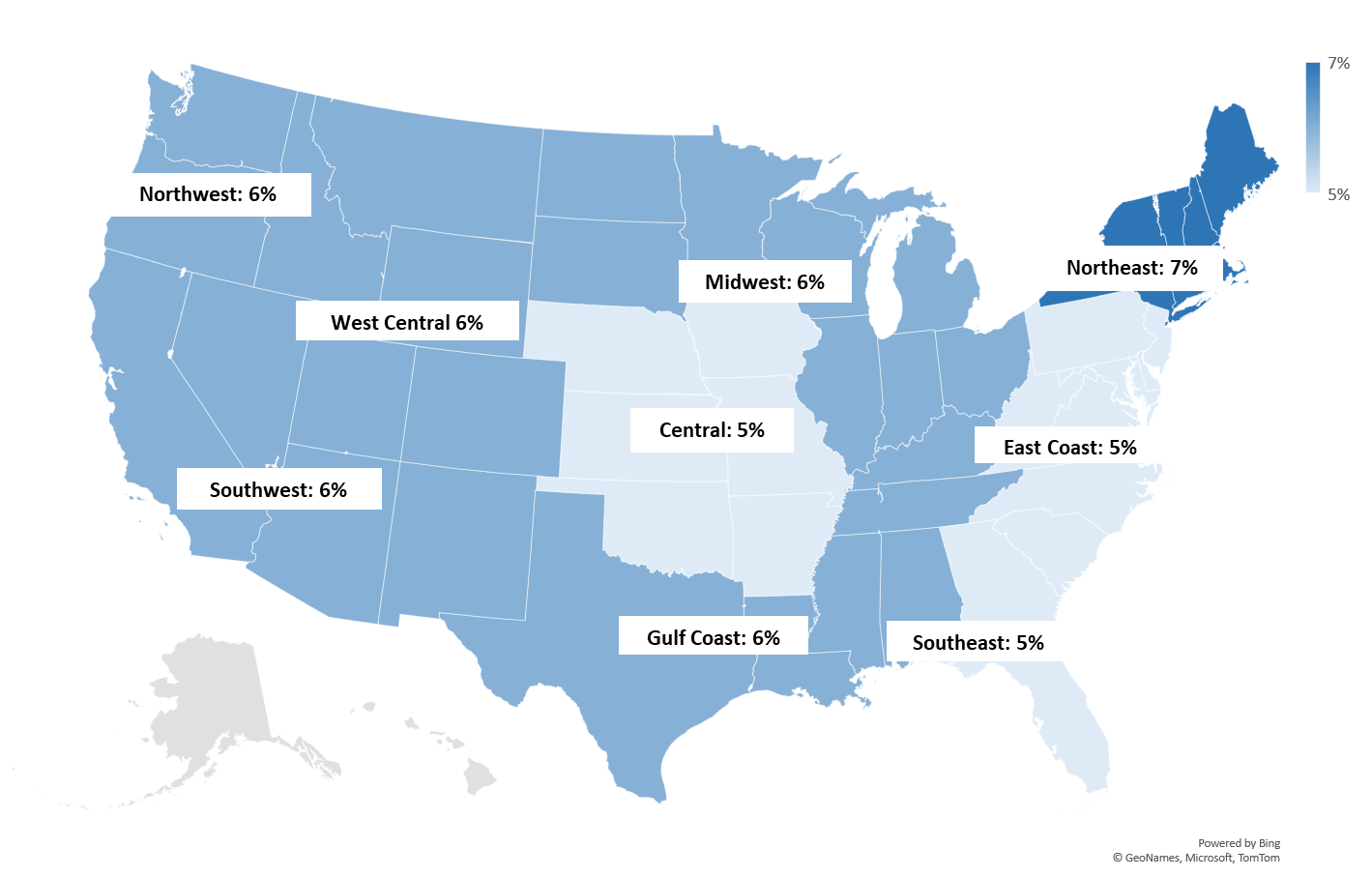
In this category, large loss claims are modeled from a typical fire loss where all components of a home’s construction are affected. Losses typically exceed $100,000.
- The fire/lightning scenario increased on average 1% since February, with the Northeast region experiencing the most significant gain of 1.4%. This scenario is averaging 5.8% higher compared to March 2023.
- Framing and cabinetry continue to display the largest pricing changes year over year, with cabinet pricing increasing at 14.9% and framing pricing decreasing by 19.6%, creating an equalizing effect. Pricing in the West Central region saw more dramatic year-over-year swings in both categories; cabinetry rose 19%, and framing dipped -22.4%.
- Three major labor categories affecting this scenario showed significant year-over-year increases; carpenter labor rate rose 7.6%, drywaller costs climbed 7.3%, and general laborer costs increased by 8.7%. Categories seeing month to month changes versus February 2024 are carpenters 1.5%, drywallers at 1.3%, and general laborers at 1.5%.
Wind/Hail (Exterior/Roof) Insights: 12-Month Trend
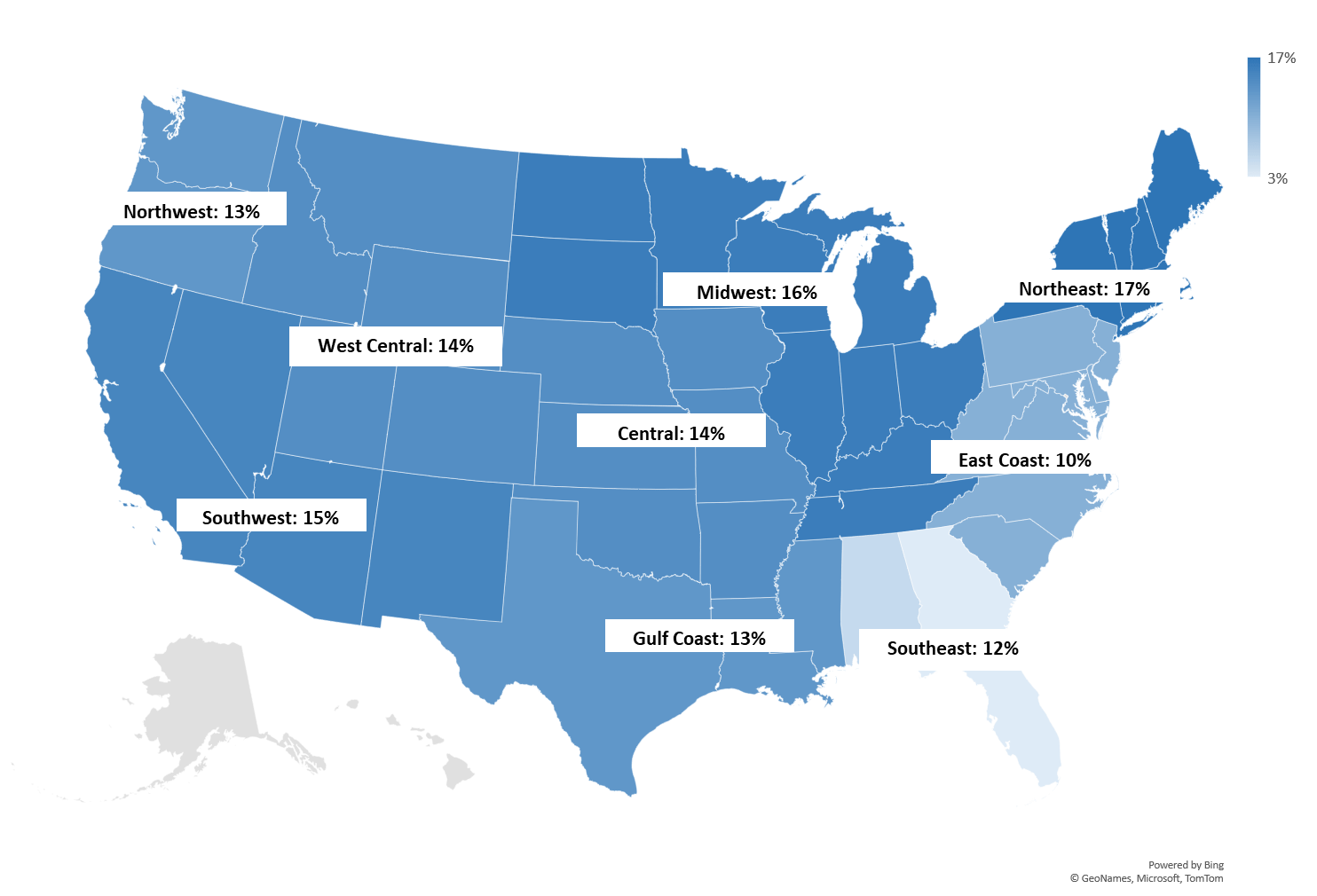
This category represents losses due to wind and/or hail weather activity. Restoration from this damage requires roof replacement, partial siding replacement, and accompanying accessories.
- The wind/hail scenario pricing rose by 13.8% compared to March 2023. This increase was primarily driven by roofing and siding material and labor cost gains.
| Labor | Change From March 2023 Pricing |
| Siding | +22.1% |
| Roofing | +9.1% |
- Since last year, roofing and siding materials increased 3.5% and 1.3%, respectively. Fencing materials decreased an average of 12.9% during the same time period. Regions showing the most significant yearly decreases in fencing material costs are Central, which declined 13%; East Coast where there was a 14.7% decrease, and West Coast where there was a 15.8% decrease.
- The wind/hail loss scenario pricing increased on average 1.1% month over month, with larger gains of 1.7% occurring in the Northwest and West Central regions.
Water (Interior Reconstruction) Insights: 12-Month Trend
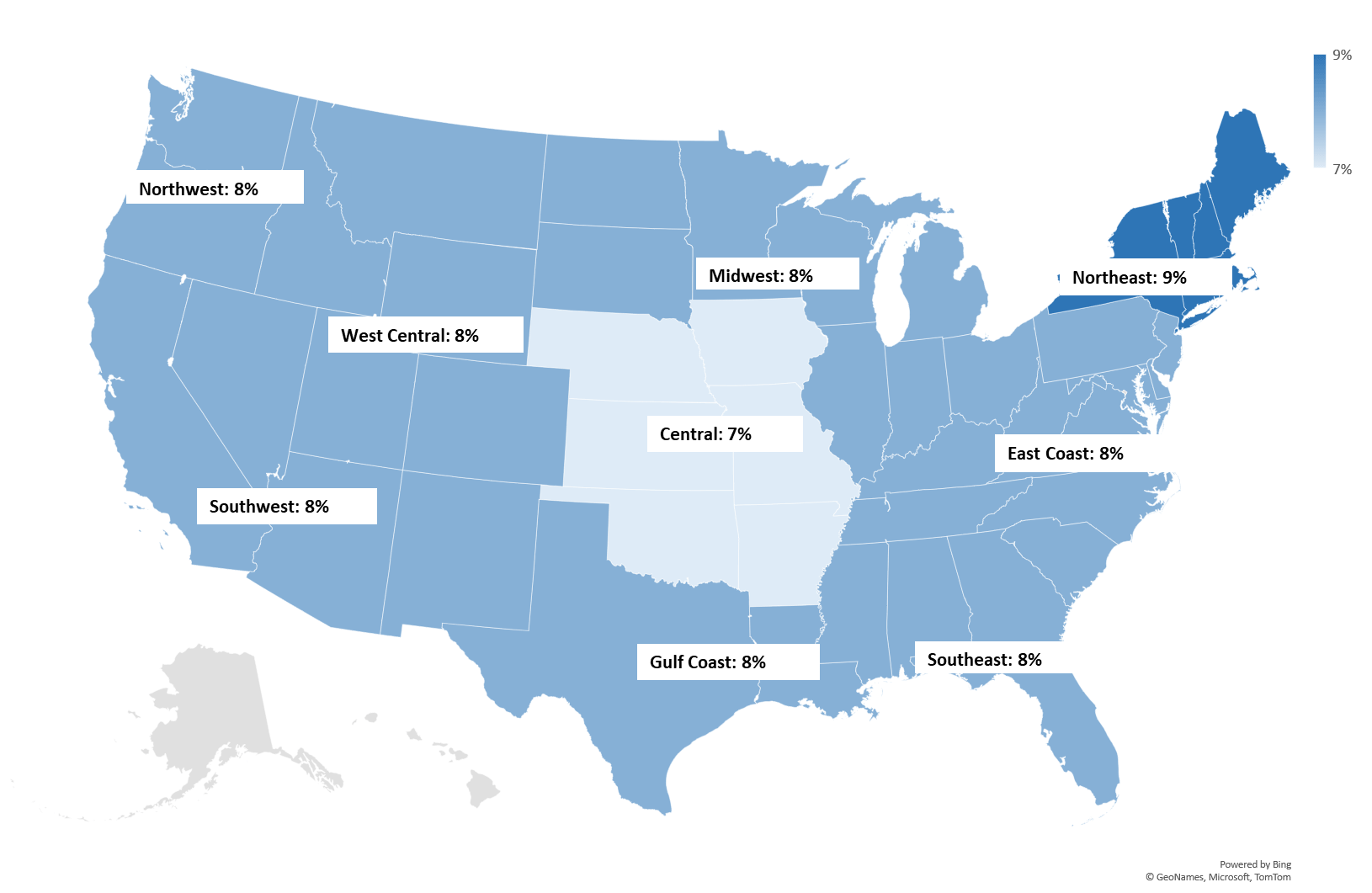
Moderately complex losses are modeled for the interior water loss scenario using the bathroom as the origin of loss where a combination of replacement and repair of common household finishes is required.
- The water (interior reconstruction) pricing scenario increased by an average of 1.7% when compared to February. The Northeast region rose 2.1%. Compared to a year ago, pricing increased by an average of 8% across all regions.
| Material | Change From March 2023 Pricing |
| Drywall | +9.1% |
| Insulation | +2.1% |
| Finished Carpentry / Trim Work | -3% |
- Many of the material categories experienced less than +/- 1% change in pricing since last month, including those referenced in the table above.
- Cleaning and painting labor rates increased year over year by 8.3% and 7.6%, respectively. However, rates have only increased by 1.4% since February 2024.
Water Mitigation (Drying) Insights: 12-Month Trend
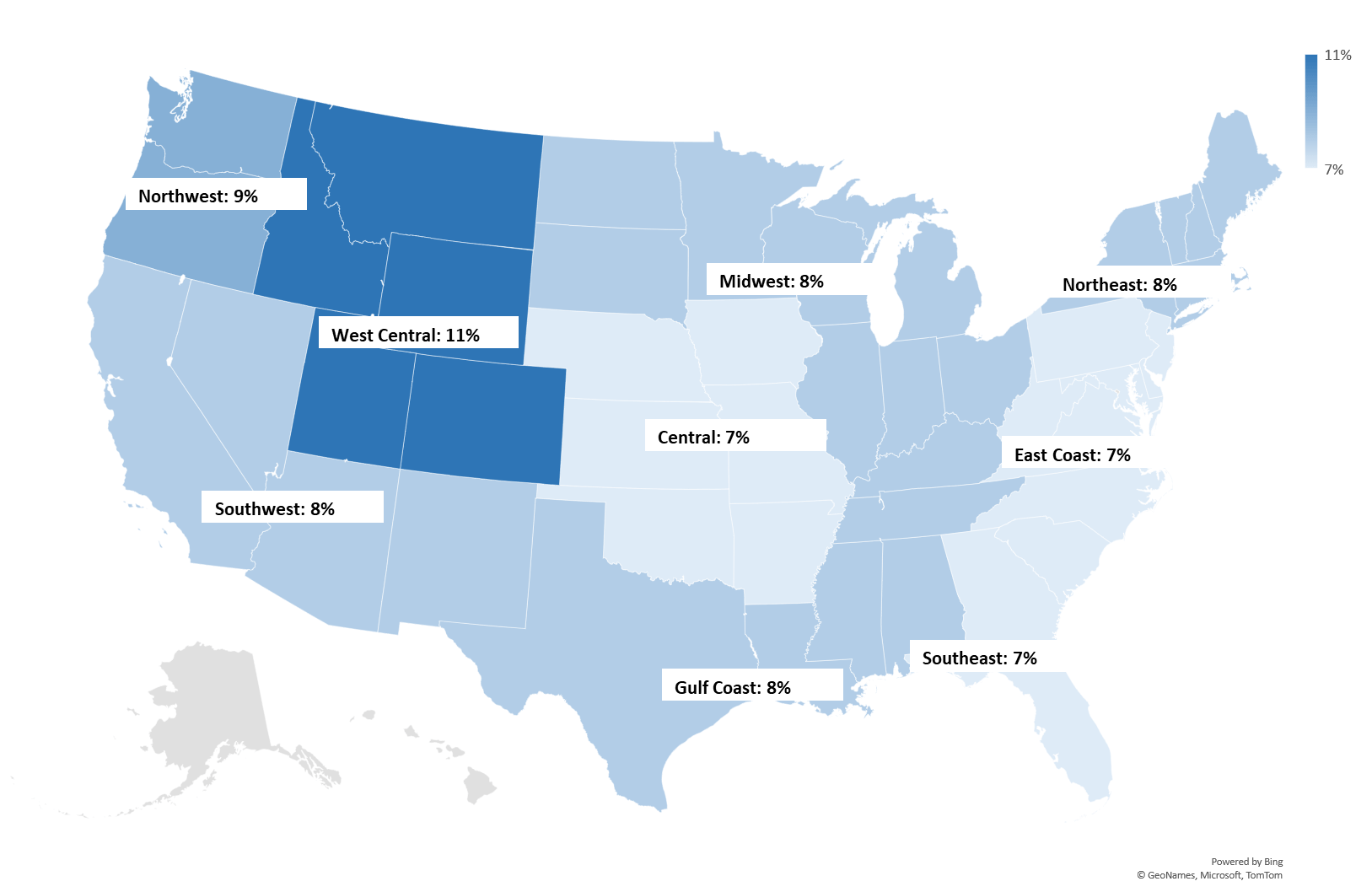
Typical drying costs for a residential structure include water extraction, removal of wet material, and drying equipment usage.
- The water mitigation scenario pricing increased by an average of 8.1% since March 2023, with the West Coast region rising 11% since last year. This year-over-year increase is fueled by water mitigation technician labor rates, which are up by 7.6% on average. Both the Northwest and West Central regions’ year-over-year labor rates were higher than the average, climbing 8.7% and 9.2%, respectively.
- Monthly, the overall loss scenario increased by 1.1% on average. However, water remediation technician labor rates have increased by an average of 1.3% since February of 2024, with the Northeast increasing at 1.5% and the Southwest seeing increases of 1.4%.










